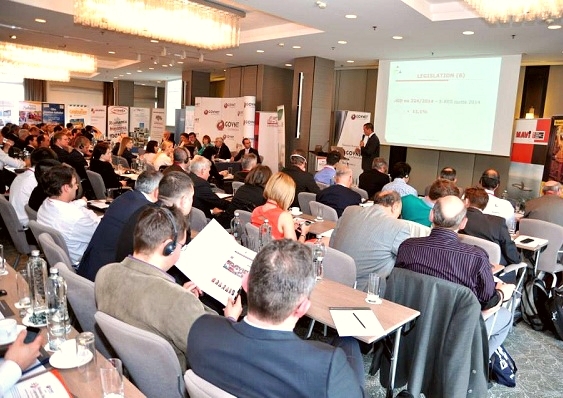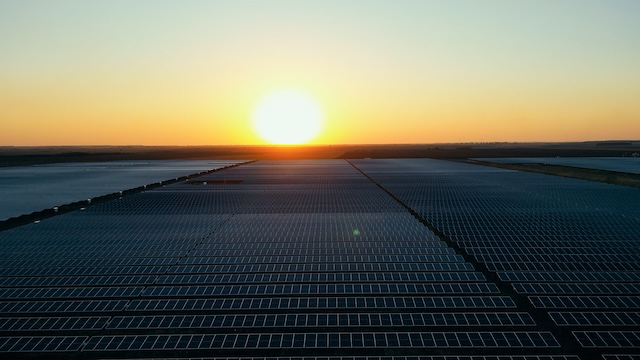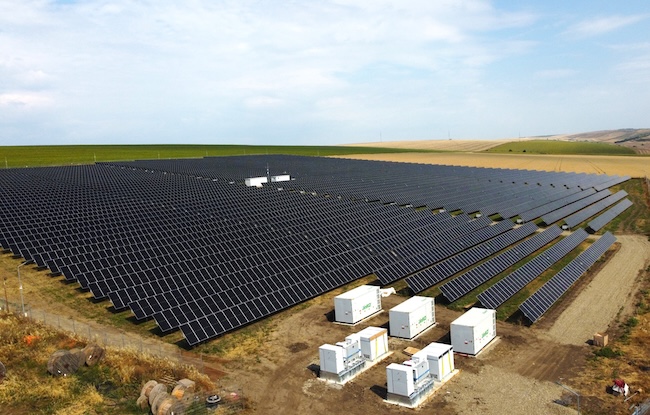Biomass and Biogas energy industry: market challenges and growth arguments

Last week was a premiere for the biomass and biogas industry which was the center of debates within the ”Biomass, Biogas & Cogeneration Romania 2014 – National Conference”, the first event dedicated exclusively to this renewable energy sector in Romania, organized by GOVNET Conferences.
With only 70 MW
installed capacity in power plants using biomass or its derivatives as fuels,
this niche of green energy has been overshadowed by wind and solar energy
sectors which have been the stars of the industry in recent years. That,
inspite of a great potential which remained untapped, pretty similarly to the case of hydropower energy. The main factors which lead to the current situation, as
well as premises for a future development have been approached within the Conference
which brought face to face professionals from all areas of activity in the
industry.
Biomass and biogas energy, an undeveloped market
Romania’s renewable
energy industry has seen an accelerated developement over the past year, which
reached its height in 2013 when total capacity installed in power plants nearly
doubled mostly driven by the boom in the solar energy sector. The enthusiasm
among developers of green energy projects has mainly concerned wind and PV
projects, biomass or biogas projects being of little interest to investors.
Hence, while there are wind projects of some 2600 MW and PV projects of nearly
1200 MW, as of May 2014 the biomass (its derivatives included) projects reached
only 70 MW, according to the ANRE’s (Romania’s Energy Regulatory
Authority) data.
”In the biogas field there are few projects
completed so far. Many drafts, many desires, everyone states that we should
produce biogas, but as you know, there are only a few projects (...) The issue
with biogas is that the Governmental structures need to be explained that
biogas is totally different compared to other renewable energy sources (...)
Fuel is not expensive, landfills generate biogas. Nothing has been done with
the existing landfills so far, landfills which produce biogas for free”, as Serban Tiganas, CEO of TEB Energy Business, one of the major players in
the domestic biogas market, explained. There
are, indeed, some exceptions, but the biogas projects developed up to this
point are rather insignificant compared to the energy potential of waste.
These concerns
were also outlined by Liviu Birau, Executive Director of IRIDEX Group, a
company active in the waste management field and also a landfill gas plant
operator: ”I believe that Romania has
vast sources which could be harnessed, particularly waste. For example, there are being run bids for integrated waste
management systems all across Romania, there are about 40 centers having funds
of some hundreds of millions of euros, with consultants hired and paid – none of
these centers is taking into consideration making use of energy generated by
waste”.
Investment costs are at least double compared to
solar and wind power projects
A major factor
leading to the current situation in the market is the cost involved by such a project
which is significantly higher compared to the investment needed for a solar or
wind power plant, an aspect Serban Tiganas also pointed out: ”It is
the largest investment, 3 – 3 million euro or so per MW (referring to a biogas
plant), compared with others which amount to about 1 million euro. It is a remarkable
financial effort”.
According to ANRE’s
latest report related to the assessment on the overcompensation of the
subvention scheme with green certificates, the investment in a biomass
cogeneration plant amounts to nearly 3.1 million euro per MW installed (in
terms of electric power capacity), whereas the costs with 1 MW installed in a
wind or solar power stations do not even reach half of that amount.
Apart from the initial investment, projects using biomass from agricultural sources – either waste or energy crops, or forestry, for instance, involve additional costs, unlike biogas, which is free, thus becoming an even greater challenge for investors: “Peculiarities of producing biomass energy derive, from my point of view, from that additional cost with fuel, which is hindering the investors’ business plan, as besides the fact that funders and banks require contracts or agreements on energy acquisition for each project so as to ensure that the power will be bought, long-term contracts for selling green certificates, for biomass projects banks usually request long-term contracts for supplying power plants with biomass”, Zoltan Nagy, Member of the Board within the Romanian Energy Regulatory Authority (ANRE) commented.
 Pleading for biomass
energy
Pleading for biomass
energy
Romania has a biomass energy potential of approximately 85.5 TWh, as per the data presented by Victor Racolta, General Manager of Eneas Romania. In this case “biomass” incorporates forestry residues and firewood, waste wood (such as sawdust), agricultural waste resulting from grain, corn stalk, vine crops debris and biogas.
Of these, agricultural waste accounts for more than 60 percent, without including energy crops, yet this opportunity is still being unvalued although the Ministry of Agriculture has started implementing measures meant to support the production of green energy from agricultural resources. For instance, upon establishing the legal framework for issuing certificates of origin for biomass obtained from agriculture, aquaculture, horticulture or food processing which is used as fuel or raw material for electricity production, last year there were issued only 28 such certificates, according to Tatiana Preda, Senior Counsellor within the Ministry of Agriculture and Rural Development.
Starting 2011, energy crops benefit from the Single Area Payment Scheme (SAPS), from subventions for diesel fuel and from state aid in an amount ranging from 50 to 70 percent of the payment related to the premium of
insurance, as Preda highlighted during the event. She further indicated that The National Rural Development Plan (PNDR 2014 - 2020) includes funds amounting to about 760 million euro allocated “for investment at farm level which can produce and
use renewable energy for own consumption or for economic operators, other than
farmers who want to process biomass to obtain renewable energy”.
Leaving aside
agricultural waste and energy crops, waste wood is another important fuel for
biomass power stations, especially when it comes to wood product manufacturers.
Egger Radauti is one of the few that developed a biomass project in order to
transform the wood processing facility into an integrated site and reduce the
consumption of fossil fuel. A
cogeneration station with 83 MW thermal power capacity and nearly 14.6 MW
electric power capacity, the 39 million investment which was commissioned this
year provides 60 percent of the electricity needed for internal consumption and
has determined a reduction by 28 percent of the natural gas consumption
Year-on-Year in the first quarter of 2014. It also secured thermal power for
technological processes and, of course, resolved the waste wood issue.
Waste which should not be wasted
Biogas, a derivative
of biomass, results from the anaerobic degradation of organic materials from
agriculture, foodstuff or feed industries, and it is most commonly accumulated
in landfills. Unlike other green energy resources, biogas is a reliable source,
such a power station being designed to operate continuously, 8000 hours/ year, hence
ensuring predictability.
Despite a reduced
number of biogas projects developed so far, there is interest in this niche of
renewable energy showing that waste is not completely wasted. One of the latest
biogas power stations commissioned is the one located in the Bihor County, where organic
waste deposited in Oradea’s landfill is used as fuel for generating both
electricity and heat. The project is based on a partnership between New Life
Energy and Eco Bihor, the company which manages the landfill.
Cogeneration, a key-point in energy efficiency strategies
Cogeneration
technology combined with biomass or biogas as fuels becomes a solution not only
for ensuring electric and thermal power for internal
consumption or for trading it,
but also in terms of energy efficiency which will be mandatory to achieve in
the coming period, since the deadline for updating regulations as per the
indications of the Directive 2012/27/EU expires on June 5, 2014. So,
cogeneration or for being more accurate, high efficiency cogeneration, conducts
to an improved energy efficiency, reducing energy bills, as well as reducing
pollutions, as Gheorghe Tucu, General Manager of Valeg Creative Solutions,
stressed out.
Tucu illustrated his
assertion through some practical examples which showed that a cogeneration
facility with an electric power capacity installed of 1 MW (40 percent electric
efficiency and 46 percent thermal efficiency) saves up to 41.6 percent of the
costs involved (it depends on how much of the heat generated is used) compared
to a regular power station. He also insisted on the importance of micro
cogeneration in the context of energy efficiency strategy, referring to the
technology used by combined heat and power stations with an electric power
capacity of maximum 50 kW, technology which fits the best to the directions
established by the European Union in that regard.
Obtaining all the permits for developing
such a project might become an adventure
The slow authorization
process could be easily a trademark of Romania since it seems to be a common issue
when developing any sort of project. While it took one year and eight months
for Egger Radauti to receive all necessary permits, IRIDEX Group has faced an
even unusual, though not surprising, situation.
”Our last
adventure was to obtain the building permit for the connection works of the
cogeneration and electric power stations because on the established route there
is a road which does not belong to anyone. I mean, the District 1 City Hall
said << Go to Chitila!>>, the Chitila Town Hall said <<Go to
the District 1 City hall!>>. There is not any road administrator, hence
we have no permit, we have nothing”, Liviu Birau told during the conference.
Legislative framework has certain inconsistencies
Energy produced using biomass and its derivatives,
biogas included, remained the sole unaffected by the changes in the subventions
scheme which lead to reductions in the amount of green certificates
corresponding to solar, wind or hydropower energy. Hence, the electricity
generated by biomass power facilities receives 2 GCs/MWh for a 15-year period.
Additionally, there is an extra GC, provided biomass derives from energy crops
(i.e. rape, soya plants, sunflower, even corn), as well as if the electricity
is produced in high-efficiency biomass CHP plants.
Although it is
definitely a positive aspect for the future development of the industry, there
are some issues with the provisions of this subvention scheme: “There are many inconsistencies. For instance, if you use
biogas to generate electricity and thermal power, there are three green
certificates – two for electric power, one for thermal power. If you do the
same using landfill gas, there is only one green certificate. I do not know on
which ground. When I went to ANRE, I was informed that we might get the second
one, but we have to prepare a documentation for them to submit to the EU
Commission”, Liviu Birau
emphasized.
Another legislative issue causing uncertainties is the recent change with
respect to the annual obligatory renewable energy quotas for the 2014-2020 period which will be set by the Government, therefore annulling the quotas
initially established. Besides these, the approval of the long-awaited feed-in
tariff by the EU Commission seems to be further delayed, according to Zoltan
Nagy who suggested that it is more likely to see a postponement of the decision
until autumn or winter given the next
elections which will determine changes at all decisional levels within the EU institutions.
Notwithstanding that there are several challenges emerging when
developing a biomass or biogas project, either it uses cogeneration technology
or not, the only 70 MW installed can be considered as substantial growth
premises, moreover when taking into consideration the need of balancing power
capacities amid the upsurge in wind and PV projects. Although the industry has
been deprived so far by the appropriate attention, there are prospects of
future development, as Zoltan Nagy or Mihail Faca, State
Secretary within the Ministry of Environment and Climate Change, among others, concluded, the latter, himself an investor in this sector, anticipating increasing investments as
developers will direct more and more towards this business field.






